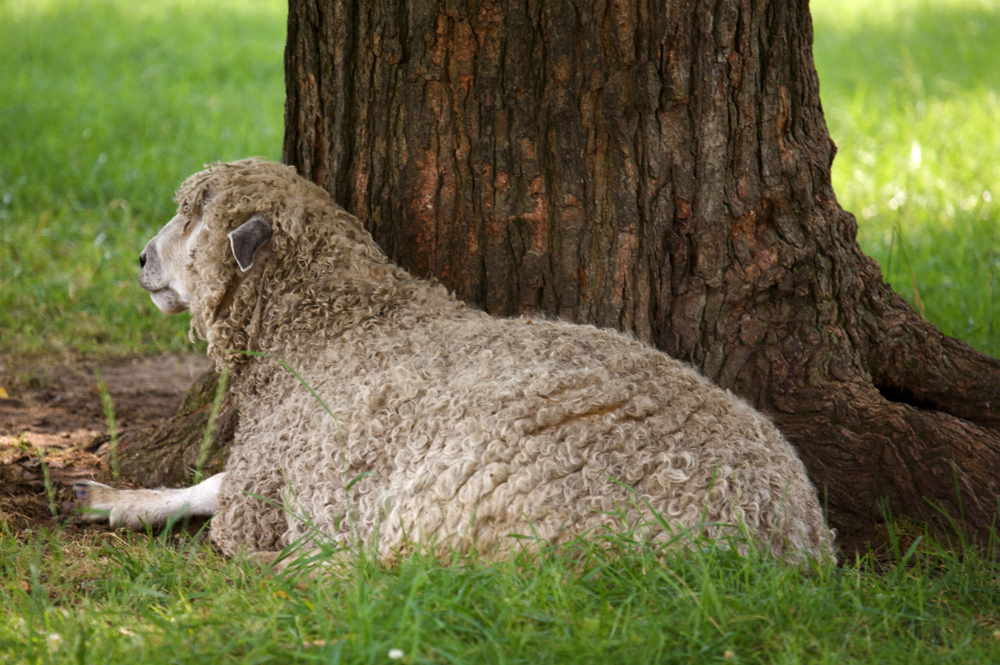The Midlands Woollen Industry
The English woollen industry pre-dates the arrival of the Romans. The Norman invasion in the eleventh century encouraged the industry to expand, and fleeces and cloth were exported across Europe.

Leicester Longwool by Glenn Brunette
In many areas, land previously used to grow corn was turned over to provide grazing for sheep. By the time of James I, demand for wool in England was so high that an export ban was introduced. This aimed to provide a plentiful supply of fleeces for manufacturers in the various divisions of the textile industry.
For the East Midlands region, the 'worsted' sector of the woollen industry was significant. The worsted industry developed an early centre in East Anglia and the town of Worstead in Norfolk gave its name to the yarn. The arrival of protestants in East Anglia from the Low Countries in the sixteenth century brought worsted production skills to England. This prompted expansion of worsted production and the introduction of new goods.
Worsted yarn
The East Midlands region, like East Anglia, had traditionally reared sheep that produced fleeces with long fibres. Nottinghamshire, Leicestershire, and Lincolnshire sheep were reputed to have some of the finest quality fleeces in the country. Fleeces with long fibres or 'staple' were preferred in worsted production. First the fleeces were combed to place the fibres in line with each other and remove the shorter fibres and dirt. After combing, the fibres were spun to create the worsted yarn. The yarn was finer and stronger than yarn processed by the wool spinning system. Woollen yarns were more bulky as the fibres were not combed and they kept more of their natural tangled characteristics.
In the knitting industry, worsted yarn became one of the main fibres used, the others being linen, silk and cotton. Worsted provided a cheaper alternative to silk and cotton, and produced garments that were more affordable for the wider population. The Leicester knitting industry developed to specialise in the production of worsted products while Nottingham was best known for cotton hosiery and Derby for silk.